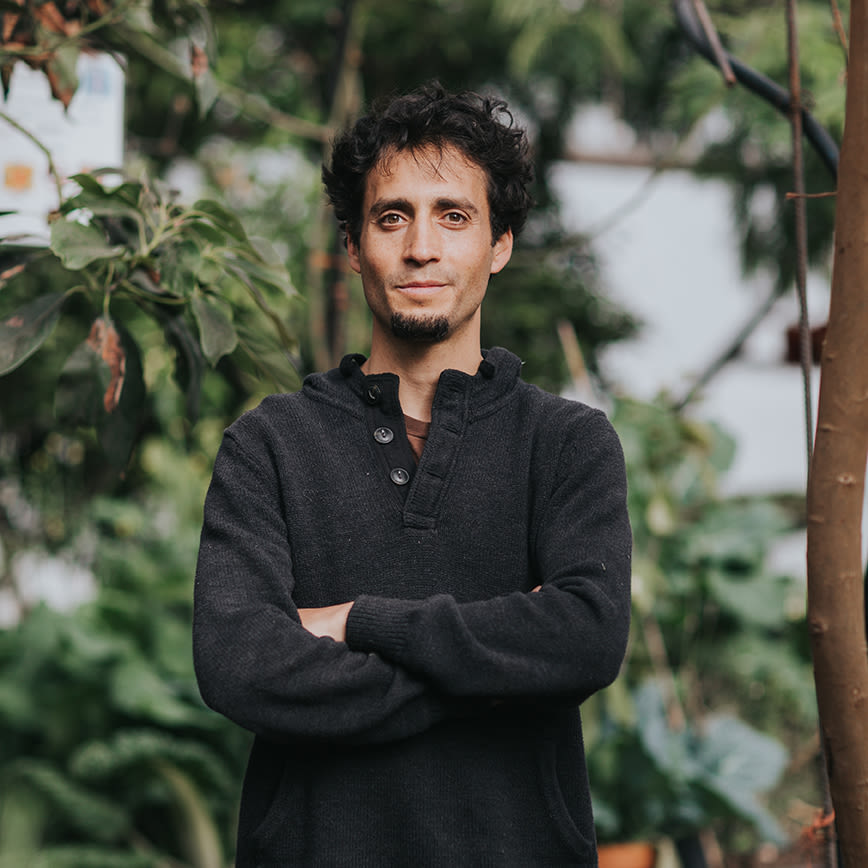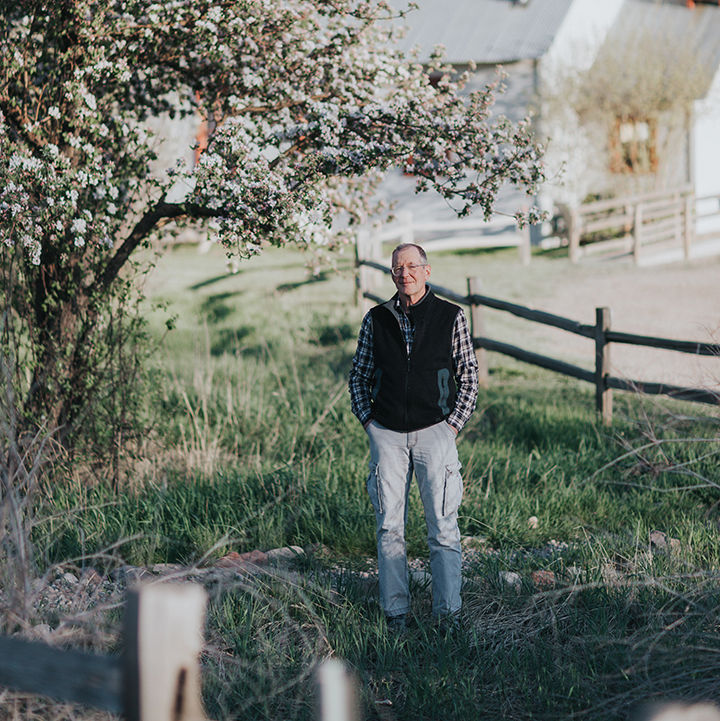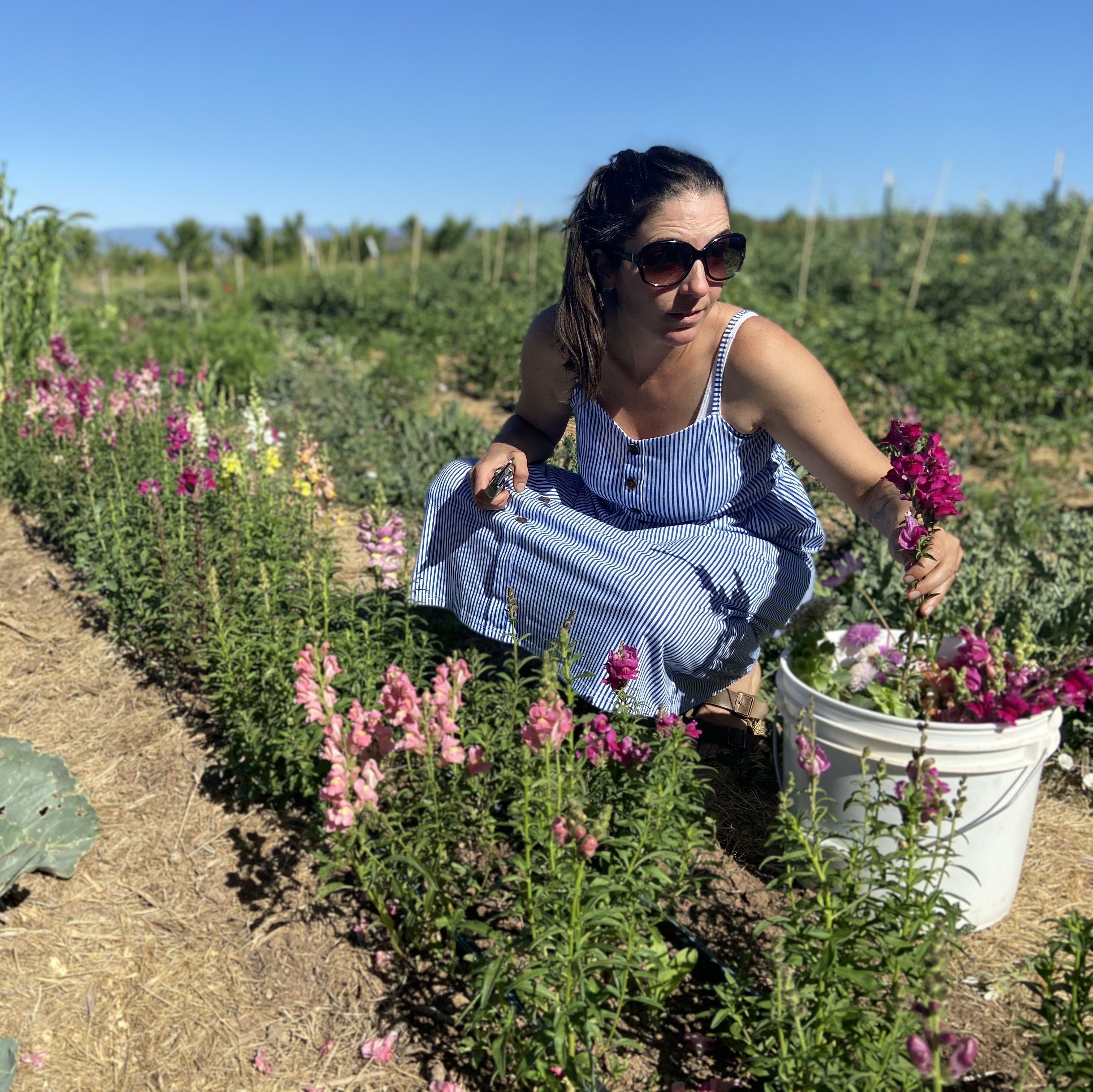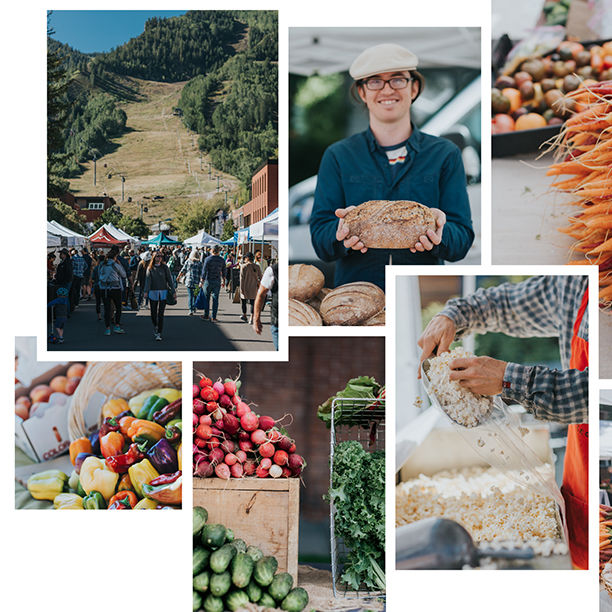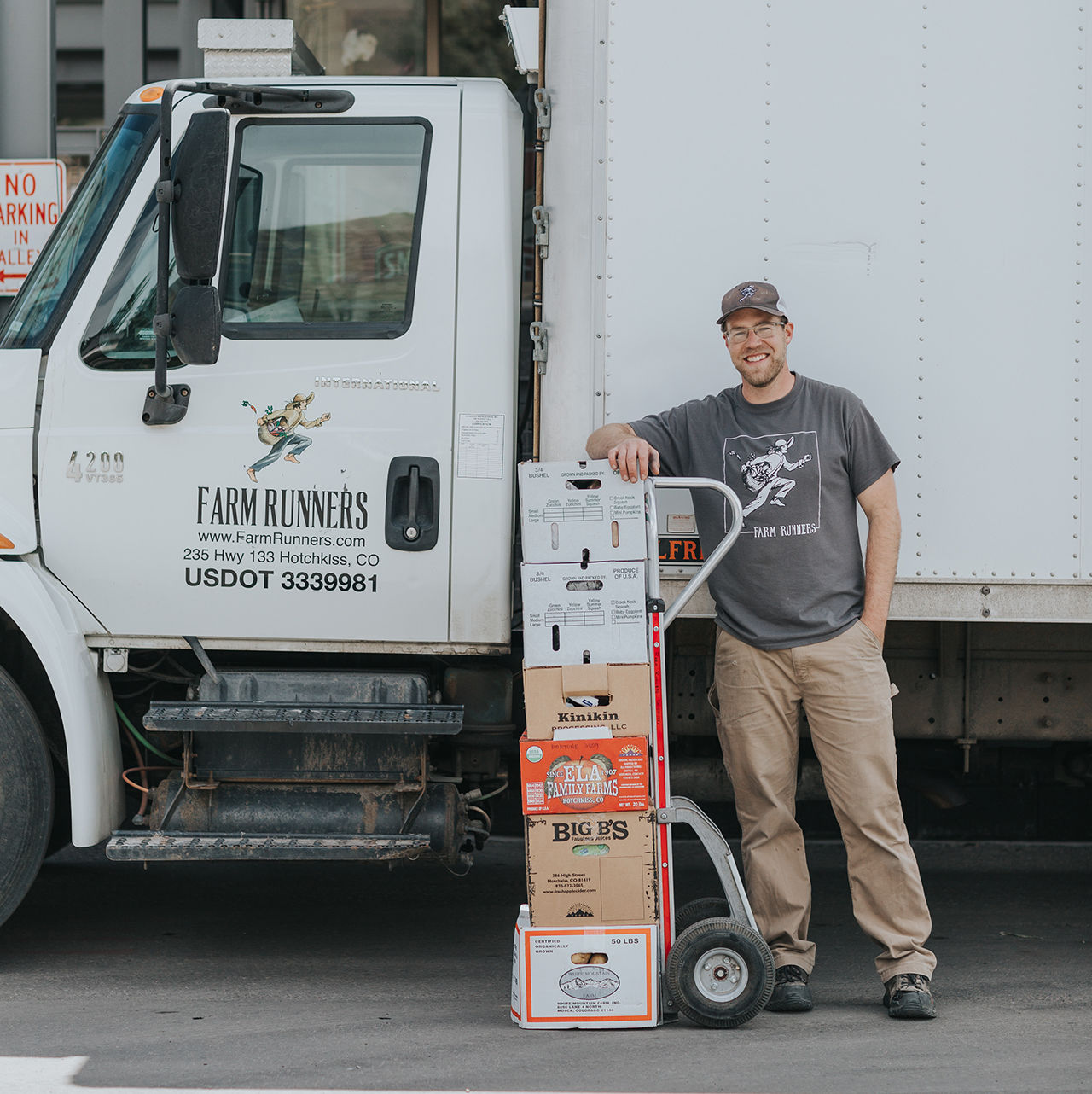Why Community Agriculture, Regenerative Farming, and Local Sourcing Matter More Than Ever
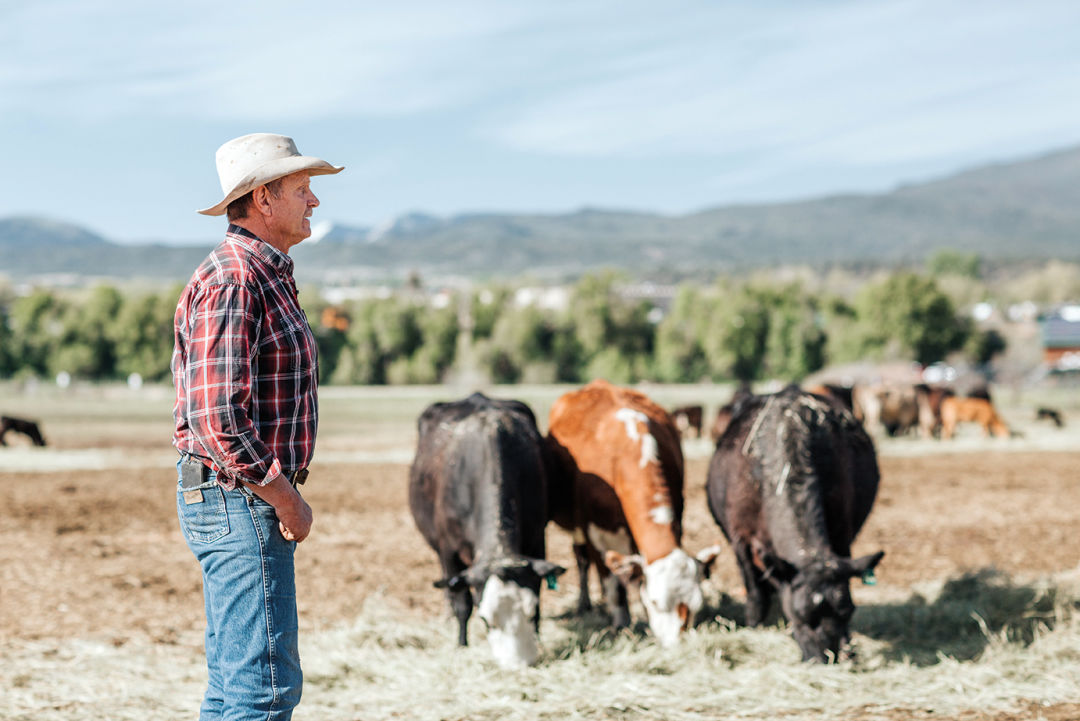
Marty Nieslanik of Carbondale's Nieslanik Beef
Come summer, farmers markets and CSA boxes overflow with fresh wealth. In miles of orchards on Colorado’s Western Slope, peaches perfume the air, cherries gleam like buttons on trees, and plums dangle as amulets from branches. Even in the Roaring Fork Valley, with farmland as high as 7,000 feet, fruitfulness abounds.
But what seems defined by a fleeting moment—that sunburst taste of a Palisade peach or a still-warm tomato in your hand—is the result of hard work and a long-laid plan. Farming is nothing if not persistence with a long view.
“It’s the anecdote of the olive farmer,” says Eden Vardy, director of the Farm Collaborative, a community agricultural center at Aspen’s Cozy Point Ranch. “When the seeds for olive trees are first planted, it can be upward of 40 years before the prime of the yield is realized. It’s truly working for the next generation.”
Digging in now to grow for the future is very much the mantra of the Roaring Fork Valley farmer, and in light of the current pandemic, sourcing our nourishment locally and ensuring food security have taken on added significance.
This valley—along with the North Fork Valley and the communities of Delta, Montrose, Olathe, and Palisade—has a long legacy of agriculture. Settlers in the 1800s often came in search of mining opportunities, but they also homesteaded: tilling the soil, nurturing crops and livestock, planting fruit trees, and digging irrigation ditches. Like those channels that still deliver precious water, the local ties to land and history have become ever more valuable.
“We’re really lucky to have a community of folks who are interested in preserving agricultural history,” says Harper Kaufman, owner of Two Roots Farm, which leases 22 acres of open space in Basalt from Pitkin County.
She’s referring not just to those tending the land but also to the cities and counties that protect and encourage agriculture. Under a program started in 2014, Pitkin County Open Space and Trails, for example, leases almost 400 acres for agricultural use at an affordable rate, with about 15 percent currently going to small farms, according to Paul Holsinger, the county’s agricultural and conservation easement administrator. In addition, the lease fees are reinvested back into the program’s properties.
The model for sustainable, regenerative farming has been alive in the valley for decades, thanks in large part to advocates like Brook LeVan of Carbondale’s Sustainable Settings and Jerome Osentowski of Central Rocky Mountain Permaculture Institute (CRMPI) in Basalt. Filmmakers Haley Thompson and Tomas Zuccareno showed how a new generation has picked up the torch in their 2018 documentary How We Grow.
For these young farmers, growing community is as critical as caring for the land itself. “A lot of young folks are coming at it not from family history or inheriting a business, but from a real consciousness of what’s happening on the planet and wanting to change that,” says Kaufman.
While the movement for local food sourcing grows, many believe we need to ramp it up even more. “One hundred years ago, 99 percent of the public had something to do with the production of their own food,” says LeVan, who co-founded Sustainable Settings, a nationally celebrated biodynamic farm and nonprofit. “Now it’s the reverse. It’s a big hole in our relationship. We’re not bending down and thanking the earth.”
That disconnect cut deep during the early onset of the Covid-19 crisis, in the Roaring Fork Valley and elsewhere, as grocery store shelves were stripped of supplies, produce sections were picked over, and flour and yeast, plus meat and eggs, were seemingly as rare as water on Mars. The silver lining: many people have switched their focus (and shopping dollars) to local food.
Across the state, community-supported agriculture programs (CSAs) sold out in record time, and eager new consumers snapped up grass-fed beef, pastured pork, and just-laid eggs. “We have customers we’ve never had before,” says Jerilyn Nieslanik, account manager of family-run Nieslanik Beef in Carbondale. “It’s interesting to see the shift in people’s mindset.”
It was also near impossible to source baby chickens for backyard hen houses or seeds for home gardens, and calls flooded into folks like CRMPI founder Osentowski, who advises on greenhouse building and teaches farming methods.
In addition to selling eggs that their humanely raised chickens lay, David and Michelle Livingston of Sunshine Mesa Farm in Hotchkiss own the Delta Elevator, a locally sourced, non-GMO feed mill serving Western Slope ranchers and farmers. “We had about four people in the mill this week who indicated they have already sold out of their livestock for the season,” Michelle said in early April. “People are ordering every turkey and meat bird they can get.”
Casey Piscura, co-owner of Wild Mountain Seeds on Sunfire Ranch in Carbondale, says that his business is up a thousand percent. “People want to grow their own food,” he explains. “Some of the big companies report being 50,000 orders behind.”
Whether this newfound interest in a more secure and sustainable food supply will continue long term is the great unknown. But right now marks a unique opportunity for the public to understand and value the critical nature of local food production. “More people want to get into this work,” says Kaufman of Two Roots. “That, in turn, makes [local food] more available, more talked about, and more accessible.”
So how can you access this healthy fare and help its continued growth? Join a CSA, and frequent farm stands; shop farmers markets, not just for specialty items but as though it’s your grocery store; sign up for a meat, dairy, or egg share; tend your own garden; support your community farmers. And realize that you get what you pay for. “We’ve been trained to think food is cheap,” says Don Lareau, co-owner of Zephyros Farm and Garden in Paonia. “That’s the mindset that has to change.”
“We’ve been trained to think food is cheap.”
—Don Lareau, Zephyros Farm and Garden
Here’s a fun game to play: Buy a carrot at the grocery store, ideally an organic one with the leafy top attached. Then buy a carrot at the farmers market. Sample both. You should need no convincing that the farm-fresh variety tastes vastly superior.
The reason, aside from careful tending in rich soil and hand-harvesting likely mere hours before, is twofold: terroir and nutrient density. Most people associate terroir—the taste of place—with wine, but it should exist in everything we eat. It only comes through, however, when a plant or animal is fully nurtured. As for the second part, “flavor equals nutrient density,” says LeVan. “It’s a fragile elegance—you can’t fake it.”
Through this type of real food, we best understand the gift that our local farmers and producers provide. By honoring their sunrise-to-sunset hard work and by seeking out the flavor and freshness of their harvest, we can be rewarded with untold bounty.
As Osentowski says, “We have an opportunity to imagine something different in the world.” Let’s chase after it with our hands close to the dirt and an empty market basket waiting to be filled.
